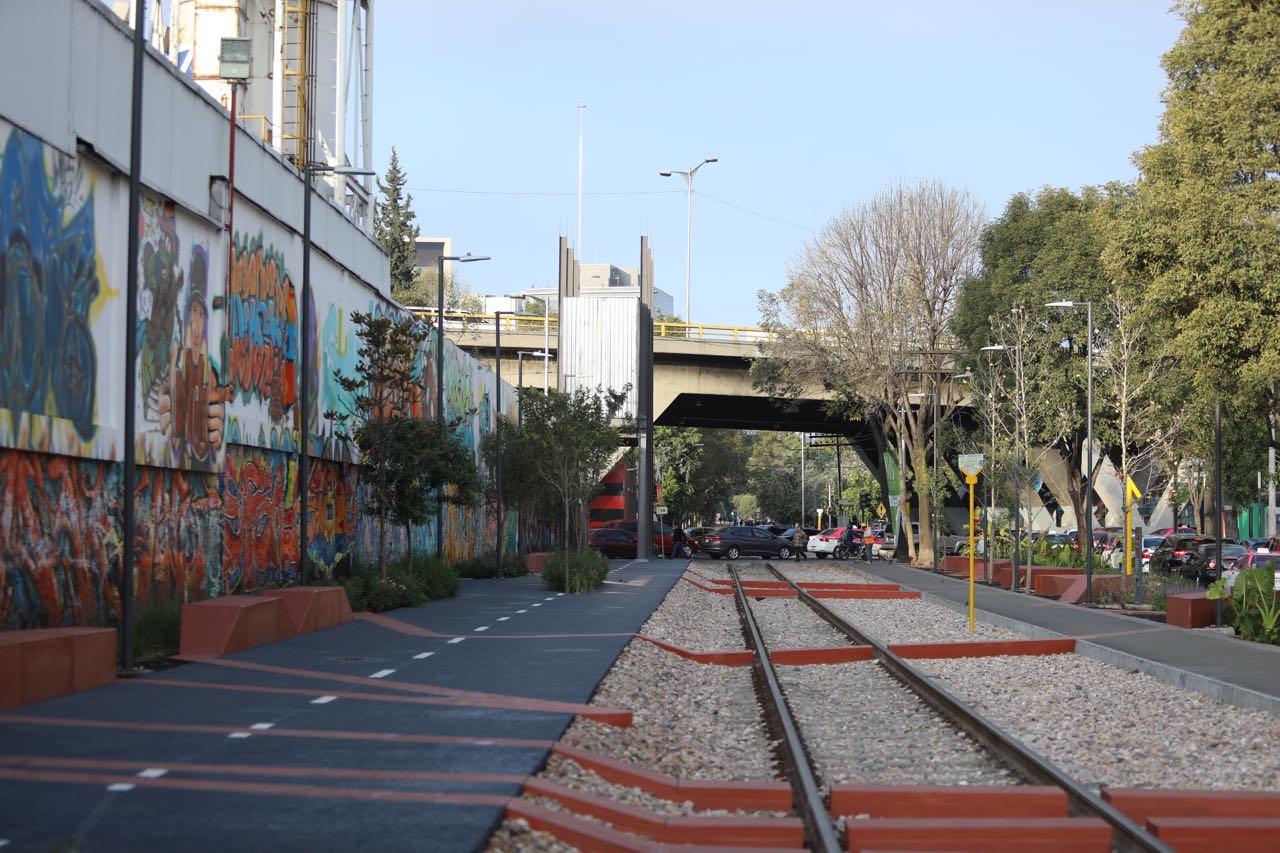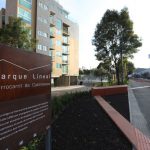

La estación de metro San Joaquín debe su nombre a la vía rápida Viaducto Río San Joaquín, que anteriormente era un río. Hoy en día, el viaducto es la principal división entre las colonias Polanco y Granada al sur. Al norte se encuentran las múltiples microcolonias que a veces se denominan colectivamente Anáhuac. Incluyen Dos Lagos, Ahuhuetes Anáhuac, Popo y Pensil Norte y Sur.
El logotipo de la estación hace referencia a la vía rápida, como se ilustra en la foto de arriba, y que lleva el nombre del antiguo río. Esta vía se encuentra trazada en gran parte siguiendo el curso del antiguo río. En el siglo XIX se redujo a un canal menor.
El metro San Joaquín se utiliza a veces para llegar a los puntos del noroeste de Polanco/Granada. Entre ellos están los museos Soumaya y Jumex, y el Acuario. Más cerca de la estación de Metro, está el nuevo Parque Lineal que bordea ambos lados del famoso Ferrocarril de Cuernavaca. El entrañable Mercado Granada no está, afortunadamente, cerca de la colonia Granada, que lleva décadas siendo testigo de grandes construcciones. De hecho, el mercado está casi debajo del Viaducto.
Por otro lado, todas las construcciones nuevas en la colonia Granada han reforzado y mejorado las numerosas micro-colonias de la Anáhuac. Para los residentes que prefieren las casas a las brillantes torres, muchos de estos barrios más pequeños se han convertido en santuarios arbolados y modelos de zonificación de uso mixto. Los comercios y las oficinas están un poco mejor integrados al norte del Viaducto.
Metro San Joaquín es el corazón de estos vibrantes barrios. Están resurgiendo tras años de abandono, y todos son bienvenidos a formar parte de la revitalización del barrio.
 unidad_de_orientacion@metro.cdmx.gob.mx
unidad_de_orientacion@metro.cdmx.gob.mx
 5627.4950/5627.4741
5627.4950/5627.4741
 https://www.metro.cdmx.gob.mx/
https://www.metro.cdmx.gob.mx/

Cercano a 0.38 kms.

Cercano a 0.56 kms.

Cercano a 0.65 kms.

El Rosario es la última estación en las líneas de metro 6 y 7, y la única estación a nivel de superficie de las dos líneas.

Fácilmente una de las estaciones más fotografiadas del sublime metro de la Ciudad de México.

Metro Camarones no es solo una de las estaciones más fotografiadas, sino una de las mejor diseñadas y más profundas.

Una puerta de entrada al Parque Bicentenario y un ángulo interesante sobre el posindustrialismo y el socialismo de mediados de siglo.

Aún hoy, una de las estaciones más famosas de todo el Sistema Metro, no vayas si no sabes que buscar.